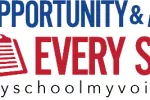
It's about time.
Lawmakers have finally realized what educators have been saying for 14 long years—a sole test score cannot accurately measure school quality. The 2015 passage of The Every Student Succeeds Act (ESSA) relegates the reliance on standardized assessments and the testing mania created by No Child Left Behind (NCLB) to a regrettable page in education history.
ESSA calls for state-designed accountability systems that will end the era of NCLB’s one-size-fits-all approach. It expands the measures of accountability states are required to use and finally brings to an end the reliance on state math and reading scores as the only indicator of success.
In this new era of accountability, states now have the opportunity to include characteristics of quality schools that educators, parents, and communities value the most—things like robust arts and athletics programs, a menu of engaging electives, rigorous Advanced Placement classes, strong parent and family engagement programs, full-time counselors, nurses, and librarians, and early learning programs.
If educators want curriculum to broaden after it was strangled by NCLB, and if they want to see the return of crucial staff like librarians, counselors, and nurses, they need to make their voices heard as states draw up new accountability systems. Plans could be submitted as early as the middle of the coming school year. Now is the time for educators to speak up so that ESSA doesn’t go the way of NCLB—with a botched implementation driven by policymakers with no classroom experience.
ESSA presents an opportunity to put decision making back into the hands of educators so that accountability systems include the best measures of student learning and school quality.
“If we don’t do everything we can to be part of the process and make our voices heard, our students will miss out,” Eskelsen García. “The benefits promised by ESSA will not be realized.”
Take a careful look at the Opportunity Dashboard (see graphic below) to choose qualities you think will equip schools to create the best learning experience for your students.
Then, band together with your colleagues, school, and local NEA affiliate to list the programs and supports that must be included in ESSA accountability plans that will put students first. (Find your state affiliate at nea.org/affiliate.)
With the Opportunity Dashboard as a springboard, the Oregon Education Association (OEA) asks educators and parents to describe what their dream school would look like if money were no object.
“After the recession and the disinvestment in education, we’ve put boundaries around what our schools can be and have lost sight of what is right for students and getting to the yes for quality education,” says OEA President Johanna Vaandering.
Getting people to think about what makes a great public school is part of Oregon Rising, an outreach program of OEA, the Oregon School Board Association, and the Confederation of Oregon School Administrators that asks Oregonians to engage at a local level and answer a fundamental state-wide question: what do they want Oregon schools to be for their children and grandchildren?
“What we are hearing is that it really is the relationship that’s important,” Vaandering says. “It’s having counselors in our schools. It’s having small class sizes that allow for that one-on-one instruction. It’s about having the electives that engage our students, it’s about having arts, physical education, and music.”
With that feedback from their schools’ stakeholders, OEA and its education partners will work with the Oregon Department of Education to make sure those factors are included in the ESSA accountability plan the state submits.
“For 14 years we were told what to do and how to do it,” Vaandering says. “Now we have the opportunity to build what we know is right for students. If we don’t grab ahold of this opportunity and embrace the leadership role we’ve been offered then we are doing a disservice to our students and future educators.”
Find out more at Get ESSA Right.



